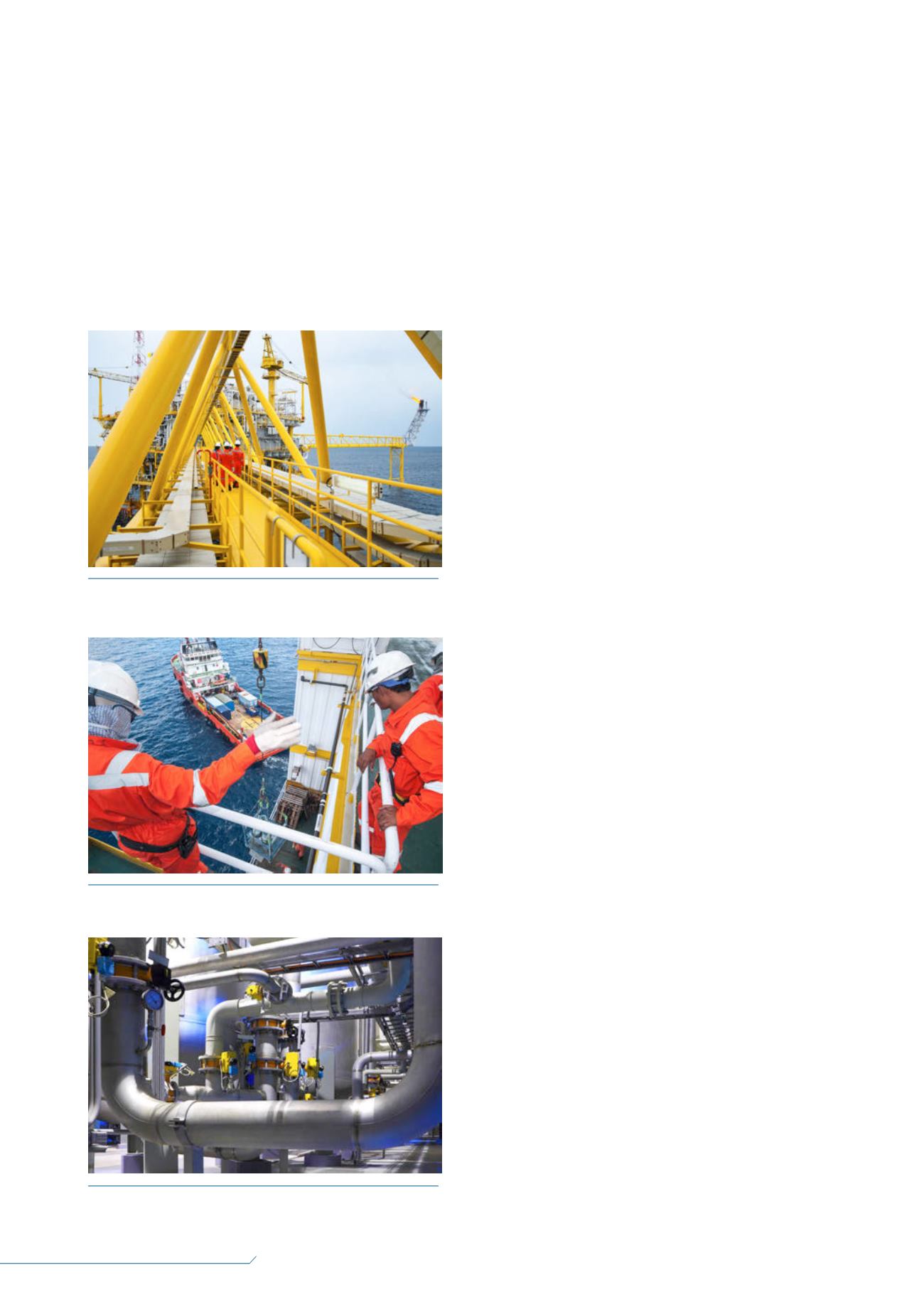
72
LNG
INDUSTRY
MARCH
2016
Removal of acid gas components, such as carbon
dioxide (CO
2
) and hydrogen sulfide (H
2
S).
Removal of other trace components, such as mercury.
Dew point suppression (temperature at which vapour
begins to change into water/droplets) of hydrocarbons
and water.
After production, the gas is processed on a platform or at
a land-based plant. Once the required specifications have
been met, the sales or rich gas is compressed and
transported by pipeline for further processing on land or
directly to customers.
Key markets for oil and gas exploration and processing
include the North Sea, the Gulf of Mexico and Asia. Global
Asian companies have an average total revenue of
approximately US$110 billion/yr and employ up to 300 000
workers only in these industries. Singapore is home to the
world’s largest manufacturer of jack-up rigs, and commands
70% of the world market. In addition, Singapore commands
an equal global market share for the conversion of floating
production storage and offloading (FPSO) units.
The future of the industry remains bright, driven by a
global increase in energy demand, even though geographic,
financial and political factors are constantly reshaping the
market. In particular, emerging markets, such as China and
India, are estimated to account for more than half of the
global incremental energy demand from 2010 to 2040.
1
To meet future demand for energy, offshore deepwater
operations, along with unconventional offshore oil and gas
exploration and production activities, will increase to address
the shortfall in conventional onshore oil and gas resources
worldwide. More sophisticated marine technologies,
exploration in arctic regions and products will be required to
enable this new play in oil and gas exploration. For example,
drilling rigs operating in the North Sea and other arctic zones
need to be designed for the harsh environment and need to
meet stringent specifications.
Heat tracing applications for
offshore facilities
There are typically two main heat tracing applications
and three levels of protection in the marine and offshore
industries for vessels operating in a cold climate or arctic
region. Generally speaking, this means that offshore oil and
gas applications for electrical heat tracing solutions can be
divided into three areas.
Winterisation
The first area covers the following:
Anti-icing or de-icing of escape passages, walkways,
staircases and handrails: icing is one of the biggest
problems when operating in cold climate regions.
Seawater spray icing and atmospheric icing on platform
surfaces, walkways and staircases can lead to slip and fall
accidents.
Freeze protection for doors and escape hatches: frozen door
seals could create a severe safety hazard in case of an alert.
Frost protection for lay-down areas, helidecks, louvers,
lifeboat davits and GPS and communication antennas
must be provided to reduce safety hazards and
ensure safe operations. Icing on antennas can impact
communications and positioning of the vessel.
Water pipe freeze protection is critical for production
and process water pipes, fresh/potable and waste water
piping, and piping used for fire protection.
Foundation heating of LNG storage tanks onshore.
Process
This second application is for the protection of process
pipelines and equipment subjected to cold and arctic
weather. The process applications and the characteristics
Figure 1.
De-icing of handrails and stairways for accident
avoidance.
Figure 2.
Accident avoidance is essential in working areas.
Figure 3.
Process temperature maintenance on pipes.


